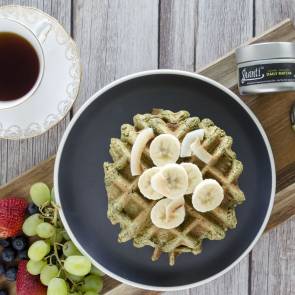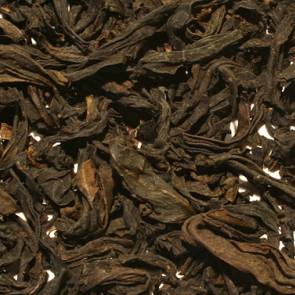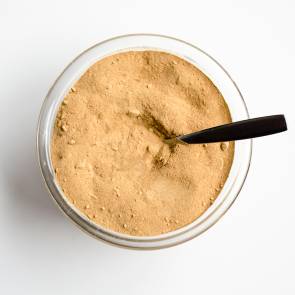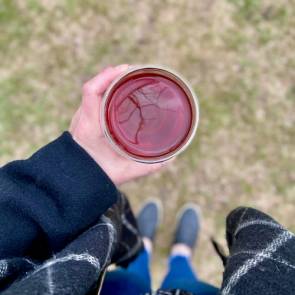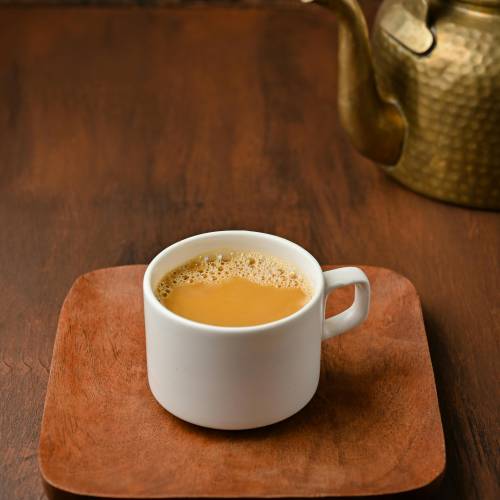
Exploring India's Black Teas: Assam vs. Nilgiri vs. Darjeeling
India, renowned globally for its exceptional black teas, boasts three distinct and legendary tea-producing regions: Assam, Nilgiri, and Darjeeling. Each region's unique climate, elevation, and terroir bestow its teas with distinct flavors and characteristics. Whether you're a seasoned tea connoisseur or exploring Indian black teas for the first time, here's your flavorful guide to finding the perfect tea for your palate.
1. Assam: Bold, Malty, and Robust
Grown in northeastern India's lush, humid lowlands, Assam teas are renowned for their bold character, malty depth, and invigorating strength. These teas present a rich, full-bodied brew with a distinct reddish-brown hue, often featuring delightful hints of honey, spice, and earthiness.
Assam tea is ideal for robust blends such as Irish Breakfast, Shanti Chai, or our powerful, flavorfull Strong Earl Grey, perfectly complemented by milk and sugar. If you're looking for a hearty, energizing tea, Assam is your best choice.
• Flavor Profile: Malty, bold, rich, and occasionally tannic
• Ideal For: Breakfast blends, chai, tea with milk
• Fun Fact: Assam is among the few tea regions worldwide located near sea level.
• Teas to Try: Assam TGFOP, Strong Assam, East India Orange Pekoe
2. Nilgiri: Smooth, Floral, and Refreshing
From the mist-covered Blue Mountains of southern India emerges Nilgiri tea, an elegant and versatile black tea grown at higher altitudes. Nilgiri teas offer a smooth, medium-bodied experience, featuring refreshing notes of citrus or delicate floral nuances. Because they do not cloud when chilled, Nilgiri teas are perfect for iced teas and refreshing beverages.
If you prefer a gentle, clean, and aromatic cup of tea that's enjoyable any time of day, Nilgiri tea is an excellent choice.
• Flavor Profile: Smooth, light briskness, floral, citrusy
• Ideal For: Iced tea, flavored blends, everyday sipping
• Pro Tip: Enhance its bright, refreshing notes with a slice of lemon or a drizzle of honey.
• Teas to Try: Korakundah Black (FOP, Korakundah Estate), Splendid Afternoon (TGFOP1, Thiashola Tea Estate)
3. Darjeeling: Delicate, Complex, and Elegant
Known as the "Champagne of Teas," Darjeeling is cultivated in West Bengal's cool Himalayan foothills. Unlike traditional black teas, Darjeeling undergoes partial oxidation, resulting in a sophisticated and nuanced flavor profile that varies throughout the year.
• First Flush (Spring): Light, delicate, floral, and grassy
• Second Flush (Summer): Richer, fruitier, highlighted by its signature muscatel (grape-like) notes
- Autumn Flush (Fall): Smooth, mellow, with warm, woody notes and a hint of fruit — perfect for cozy sipping as the weather cools
Darjeeling tea is best enjoyed plain, allowing you to fully appreciate its complex, layered characteristics. Perfect for a quiet afternoon or mindful sipping, it's an ideal companion to fine pastries or desserts.
• Flavor Profile: Muscatel, floral, fruity, nuanced
• Ideal For: Afternoon tea, sipping without added milk or sugar, pairing with pastries
• Insider Tip: Look for single-estate Darjeeling teas from the first or second flush for an exceptional tea experience.
• Teas to Try: Darjeeling Black (FTGFOP1, 2nd Flush, Poobong Tea Estate), Darjeeling Black (FTGFOP1 Vintage Autumn Flush, Seeyok Tea Estate), Darjeeling Green (FTGFOP1, Risheehat Tea Estate or Selim Hill)
Choosing the Right Tea for You:
• Choose Assam for a bold, energizing brew, ideal for mornings and strong blends.
• Choose Nilgiri for a versatile, refreshing, and aromatic experience, excellent hot or iced.
• Choose Darjeeling for sophistication, complexity, and nuanced sipping without additives.



